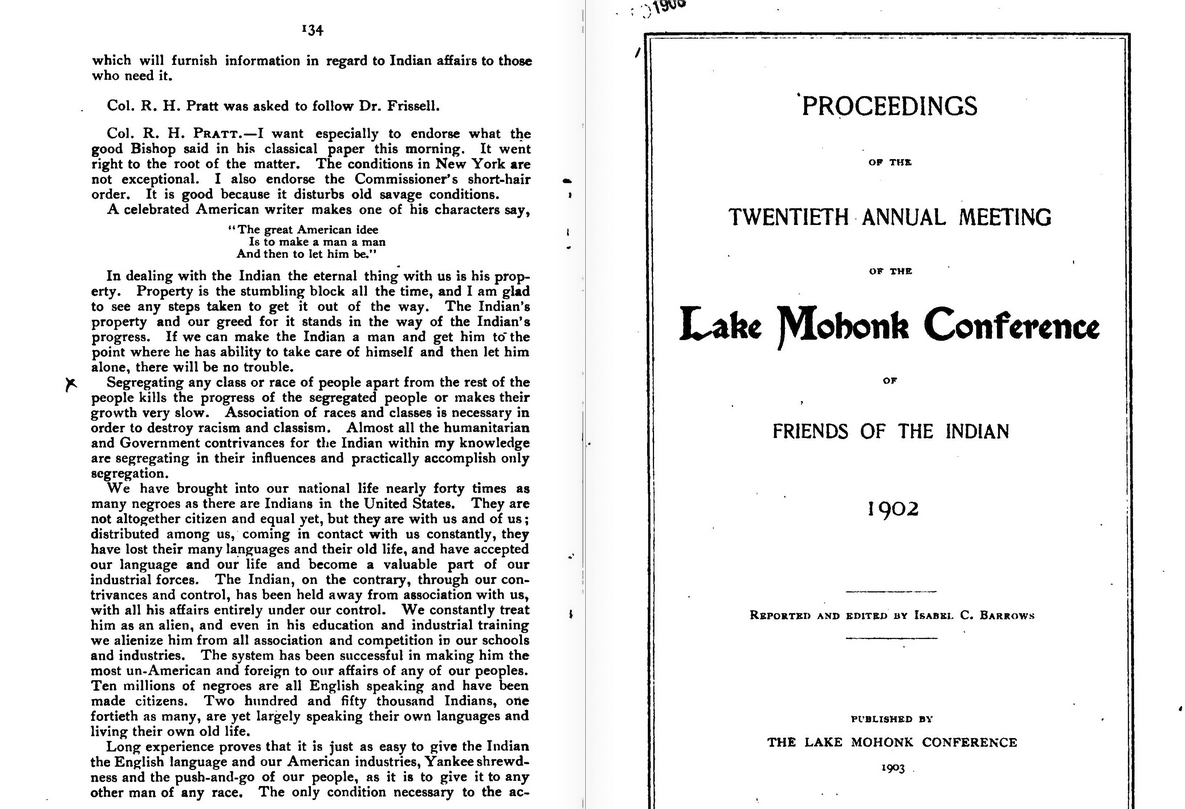|
National Organization For Men Against Sexism
__FORCETOC__ The National Organization for Men Against Sexism (NOMAS) is an American organization that began in the 1970s as an adjunct to the second-wave feminism movement of the time. In 1982, the organization, then called the M&M (Men and Masculinity) Conference, elected its first national council "to provide a collective leadership to the anti-sexist men's movement." In 1990, the organization adopted its present name. According to its website, "NOMAS advocates a perspective that is pro-feminist, gay affirmative, anti-racist, dedicated to enhancing men's lives, and committed to justice on a broad range of social issues including class, age, religion, and physical abilities." The organization is a part of the men's movement that includes the men's liberation movement, pro-feminist men's movement, mythopoetic men's movement, men's rights movement, and the Christian men's movement, most notably represented by the Promise Keepers. Principles NOMAS believes "men can live as happi ... [...More Info...] [...Related Items...] OR: [Wikipedia] [Google] [Baidu] |
Second-wave Feminism
Second-wave feminism was a period of feminist activity that began in the early 1960s and lasted roughly two decades, ending with the feminist sex wars in the early 1980s and being replaced by third-wave feminism in the early 1990s. It occurred throughout the Western world and aimed to increase women's equality by building on the feminist gains of the late 19th and early 20th centuries. Second-wave feminism built on first-wave feminism and broadened the scope of debate to include a wider range of issues: sexuality, family, domesticity, the workplace, reproductive rights, ''de facto'' inequalities, and official legal inequalities. First-wave feminism typically advocated for formal equality and second-wave feminism advocated for substantive equality. It was a movement focused on critiquing patriarchal or male-dominated institutions and cultural practices throughout society. Second-wave feminism also brought attention to issues of domestic violence and marital rape, created ... [...More Info...] [...Related Items...] OR: [Wikipedia] [Google] [Baidu] |
Sexual Harassment
Sexual harassment is a type of harassment based on the sex or gender of a victim. It can involve offensive sexist or sexual behavior, verbal or physical actions, up to bribery, coercion, and assault. Harassment may be explicit or implicit, with some examples including making unwanted sexually colored remarks, actions that insult and degrade by gender, showing pornography, demanding or requesting sexual favors, offensive sexual advances, and any other unwelcome physical, verbal, or non-verbal (sometimes provocative) conduct based on sex. Sexual harassment includes a range of actions from verbal transgressions to sexual abuse or sexual assault, assault.Dziech, Billie Wright; Weiner, Linda. ''The Lecherous Professor: Sexual Harassment on Campus''. Chicago Illinois: University of Illinois Press, 1990. ; Boland, 2002 Harassment can occur in many different social settings such as the workplace, the home, school, or religious institutions. Harassers or victims can be of any gender. In ... [...More Info...] [...Related Items...] OR: [Wikipedia] [Google] [Baidu] |
Domestic Violence-related Organizations In The United States
Domestic may refer to: In the home * Anything relating to the human home or family ** A domestic animal, one that has undergone domestication ** A domestic appliance, or home appliance ** A domestic partnership ** Domestic science, sometimes called family and consumer science ** Domestic violence ** A domestic worker In the state * Domestic affairs, matters relating to the internal government of a Sovereign state * Domestic airport * Domestic flight * Domestic policy, the internal policy of a state Other * Domestic, Indiana, an unincorporated community in Wells County * ''Domestikos'' (), a Byzantine title ** Domestic of the Schools, commander-in-chief of the Byzantine army in the 9th-11th centuries * Domestic (film), ''Domestic'' (film), a 2012 Romanian comedy film See also * Domestic discipline (other) * Housekeeper (other) {{disambiguation ... [...More Info...] [...Related Items...] OR: [Wikipedia] [Google] [Baidu] |
Anti-homophobia
Homophobia encompasses a range of negative attitudes and feelings toward homosexuality or people who identify or are perceived as being lesbian, Gay men, gay or bisexual. It has been defined as contempt, prejudice, aversion, hatred, or antipathy, may be based on irrational fear and may sometimes be attributed to religious beliefs.* * * * * Homophobia is observable in critical and hostile behavior such as discrimination and Violence against LGBTQ people, violence on the basis of sexual orientations that are non-heterosexual. Recognized types of homophobia include ''institutionalized'' homophobia, e.g. religious homophobia and state-sponsored homophobia, and ''internalized'' homophobia, experienced by people who have same-sex attractions, regardless of how they identify. According to 2010 Hate Crimes Statistics released by the FBI National Press Office, 19.3 percent of hate crimes across the United States "were motivated by a sexual orientation bias." Moreover, in a Southern ... [...More Info...] [...Related Items...] OR: [Wikipedia] [Google] [Baidu] |
Feminist Organizations In The United States
Feminism is a range of socio-political movements and ideologies that aim to define and establish the political, economic, personal, and social equality of the sexes. Feminism holds the position that modern societies are patriarchal—they prioritize the male point of view—and that women are treated unjustly in these societies. Efforts to change this include fighting against gender stereotypes and improving educational, professional, and interpersonal opportunities and outcomes for women. Originating in late 18th-century Europe, feminist movements have campaigned and continue to campaign for women's rights, including the right to vote, run for public office, work, earn equal pay, own property, receive education, enter into contracts, have equal rights within marriage, and maternity leave. Feminists have also worked to ensure access to contraception, legal abortions, and social integration; and to protect women and girls from sexual assault, sexual harassment, and do ... [...More Info...] [...Related Items...] OR: [Wikipedia] [Google] [Baidu] |
Gender Inequality
Gender inequality is the social phenomenon in which people are not treated equally on the basis of gender. This inequality can be caused by gender discrimination or sexism. The treatment may arise from distinctions regarding biology, psychology, or cultural norms prevalent in the society. Some of these distinctions are empirically grounded, while others appear to be social constructs. While current policies around the world cause inequality among individuals, it is women who are most affected. Gender inequality weakens women in many areas such as Gender disparities in health, health, Sex differences in education, education, and Gender pay gap, business life. Studies show the different experiences of genders across many domains including education, life expectancy, personality, interests, family life, careers, and political affiliation. Gender inequality is experienced differently across different cultures. Sex differences Biology Natural differences exist between the sexes bas ... [...More Info...] [...Related Items...] OR: [Wikipedia] [Google] [Baidu] |
Sexism
Sexism is prejudice or discrimination based on one's sex or gender. Sexism can affect anyone, but primarily affects women and girls. It has been linked to gender roles and stereotypes, and may include the belief that one sex or gender is intrinsically superior to another. Extreme sexism may foster sexual harassment, rape, and other forms of sexual violence. Discrimination in this context is defined as discrimination toward people based on their gender identity or their gender or sex differences. An example of this is workplace inequality. Sexism refers to violation of equal opportunities (Equal opportunity, formal equality) based on gender or refers to violation of equality of outcomes based on gender, also called substantive equality. Sexism may arise from social or cultural customs and norms. Etymology and definitions According to legal scholar Fred R. Shapiro, the term "sexism" was most likely coined on November 18, 1965, by Pauline M. Leet during a "Student-Faculty For ... [...More Info...] [...Related Items...] OR: [Wikipedia] [Google] [Baidu] |
Racism
Racism is the belief that groups of humans possess different behavioral traits corresponding to inherited attributes and can be divided based on the superiority of one Race (human categorization), race or ethnicity over another. It may also mean prejudice, discrimination, or antagonism directed against other people because they are of a different ethnic background. Modern variants of racism are often based in social perceptions of biological differences between peoples. These views can take the form of social actions, practices or beliefs, or political systems in which different races are ranked as inherently superior or inferior to each other, based on presumed shared inheritable traits, abilities, or qualities. There have been attempts to legitimize racist beliefs through scientific means, such as scientific racism, which have been overwhelmingly shown to be unfounded. In terms of political systems (e.g. apartheid) that support the expression of prejudice or aversion in discri ... [...More Info...] [...Related Items...] OR: [Wikipedia] [Google] [Baidu] |
Heterosexual
Heterosexuality is romantic attraction, sexual attraction, or sexual behavior between people of the opposite sex or gender. As a sexual orientation, heterosexuality is "an enduring pattern of emotional, romantic, and/or sexual attractions" to people of the opposite sex. It "also refers to a person's sense of identity based on those attractions, related behaviors, and membership in a community of others who share those attractions." Someone who is heterosexual is commonly referred to as ''straight.'' Along with bisexuality and homosexuality, heterosexuality is one of the three main categories of sexual orientation within the heterosexual–homosexual continuum. Across cultures, most people are heterosexual, and heterosexual activity is by far the most common type of sexual activity. Heterosexuality has mostly been viewed as the normative and most socially dominant form of sexual orientation. Scientists do not know the exact cause of sexual orientation, but they theorize t ... [...More Info...] [...Related Items...] OR: [Wikipedia] [Google] [Baidu] |
Bisexual
Bisexuality is romantic attraction, sexual attraction, or sexual behavior toward both males and females. It may also be defined as the attraction to more than one gender, to people of both the same and different gender, or the attraction to people regardless of their sex or gender identity ( ''pansexuality''). The term ''bisexuality'' is mainly used for people who experience both heterosexual and homosexual attraction. Bisexuality is one of the three main classifications of sexual orientation along with heterosexuality and homosexuality, all of which exist on the heterosexual–homosexual continuum. A bisexual identity does not necessarily equate to equal sexual attraction to both sexes; commonly, people who have a distinct but not exclusive sexual preference for one sex over the other also identify themselves as bisexual. Scientists do not know the exact determinants of sexual orientation, but they theorize that it is caused by a complex interplay of genetic, hormona ... [...More Info...] [...Related Items...] OR: [Wikipedia] [Google] [Baidu] |
Lesbian
A lesbian is a homosexual woman or girl. The word is also used for women in relation to their sexual identity or sexual behavior, regardless of sexual orientation, or as an adjective to characterize or associate nouns with female homosexuality or same-sex attraction. Relatively little in history was documented to describe female homosexuality, though the earliest mentions date to at least the 500s BC. When early sexologists in the late 19th century began to categorize and describe homosexual behavior, hampered by a lack of knowledge about homosexuality or women's sexuality, they distinguished lesbians as women who did not adhere to female gender roles. They classified them as mentally ill—a designation which has been reversed since the late 20th century in the global scientific community. Women in homosexual relationships in Europe and the United States responded to the discrimination and repression either by hiding their personal lives, or accepting the label of outcast ... [...More Info...] [...Related Items...] OR: [Wikipedia] [Google] [Baidu] |







